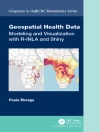Recommended intake levels for nutrients and other dietary components were designed initially to prevent nutrient deficiency diseases in a given population, and the original methodological approach used to derive intake values did not include consideration for other applications. However, with the increasing globalization of information and the identification of a variety of factors specific to different population subgroups (e.g., young children and women of reproductive age) that influence their nutritional needs, there has been increasing recognition of the need to consider methodological approaches to deriving nutrient reference values (NRVs) that are applicable across countries and that take into account the varying needs of different population subgroups.There is a need for guidance and recommendations about methodological approaches, as well as their potential for application to an international process for the development of NRVs, and particularly for young children and women of reproductive age. Harmonization of Approaches to Nutrient Reference Values: Applications to Young Children and Women of Reproductive Age examines these issues and makes recommendations for a unified approach to developing NRVs that would be acceptable globally.
Committee on the Application of Global Harmonization of Methodological Approaches to Nutrient Intake Recommendations for Young Children and Women of Reproductive Age & Food and Nutrition Board
Harmonization of Approaches to Nutrient Reference Values [EPUB ebook]
Applications to Young Children and Women of Reproductive Age
Harmonization of Approaches to Nutrient Reference Values [EPUB ebook]
Applications to Young Children and Women of Reproductive Age
Купите эту электронную книгу и получите еще одну БЕСПЛАТНО!
язык английский ● Формат EPUB ● страницы 174 ● ISBN 9780309477727 ● издатель National Academies Press ● опубликованный 2018 ● Загружаемые 3 раз ● валюта EUR ● Код товара 7145639 ● Защита от копирования Adobe DRM
Требуется устройство для чтения электронных книг с поддержкой DRM












